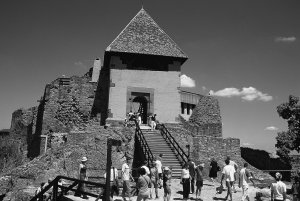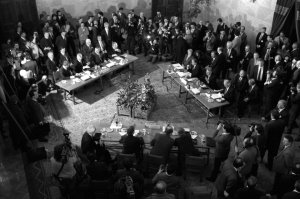This is the archival site of the former V4 portal. As of July 2024, it is no longer updated.
Visit visegrad.group for the current website.
Visit visegrad.group for the current website.

Tue 30 December 2025
Warszawa (PL)
4/2°C
| Tue | Wed | Thu | Fri | Sat |
|---|---|---|---|---|
| 1 | 3 | 5 | 6 | 8 |
Tue 30 December 2025
Praha (CZ)
6/2°C
| Tue | Wed | Thu | Fri | Sat |
|---|---|---|---|---|
| 6 | 5 | 8 | 8 | 9 |
Tue 30 December 2025
Bratislava (SK)
6/-1°C
| Tue | Wed | Thu | Fri | Sat |
|---|---|---|---|---|
| 8 | 6 | 7 | 8 | 8 |
Tue 30 December 2025
Budapest (HU)
5/-2°C
| Tue | Wed | Thu | Fri | Sat |
|---|---|---|---|---|
| 6 | 6 | 6 | 9 | 8 |
History of the Visegrad Group
 The Visegrad Group was formed on 15th February 1991 at a meeting of the President of the Czechoslovak Republic, Václav Havel, the President of the Republic of Poland, Lech Wałęsa, and the Prime Minister of the Republic of Hungary, József Antall. This high-level meeting in Visegrad, Hungary, created an imaginary historical arch linking the idea of this meeting to the idea of a similar meeting, which took place there in 1335 and was attended by John of Luxembourg, King of Bohemia, Charles I of Anjou (Charles Robert), King of Hungary, and Casimir III, King of Poland. The central motif of the two meetings was the desire to intensify mutual cooperation and friendship among the three Central European states (see more on the 1335 Visegrád congress).
The Visegrad Group was formed on 15th February 1991 at a meeting of the President of the Czechoslovak Republic, Václav Havel, the President of the Republic of Poland, Lech Wałęsa, and the Prime Minister of the Republic of Hungary, József Antall. This high-level meeting in Visegrad, Hungary, created an imaginary historical arch linking the idea of this meeting to the idea of a similar meeting, which took place there in 1335 and was attended by John of Luxembourg, King of Bohemia, Charles I of Anjou (Charles Robert), King of Hungary, and Casimir III, King of Poland. The central motif of the two meetings was the desire to intensify mutual cooperation and friendship among the three Central European states (see more on the 1335 Visegrád congress).
The formation of the Visegrad Group was motivated by four factors of decisive relevance:
- the desire to eliminate the remnants of the communist bloc in Central Europe;
- the desire to overcome historic animosities between Central European countries;
- the belief that through joint efforts it will be easier to achieve the set goals, i.e. to successfully accomplish social transformation and join in the European integration process; and
- the proximity of ideas of the then ruling political elites.
 It was especially in the initial period of its existence (1991–1993) when the Visegrad Group played its most important role during talks with NATO and the EU. In the following years, the intensity of cooperation between the V4 countries began to slacken due to the prevalence of the idea that individual efforts towards accession to the Euro-Atlantic integration formations will be more efficient. Visegrad cooperation was resumed in 1998.
It was especially in the initial period of its existence (1991–1993) when the Visegrad Group played its most important role during talks with NATO and the EU. In the following years, the intensity of cooperation between the V4 countries began to slacken due to the prevalence of the idea that individual efforts towards accession to the Euro-Atlantic integration formations will be more efficient. Visegrad cooperation was resumed in 1998.In the wake of disintegration of Czechoslovakia in 1993, the Visegrad Group has since then been comprised of four countries, as both successor countries, the Czech Republic and the Slovak Republic, are members of the Visegrad Group.
See also:
Brief history of the Czech Republic
Brief history of Hungary
Brief history of Poland
Brief history Slovakia
Calendar of selected events of the Visegrad Group:
1993–1998 ● 1999 ● 2000 ● 2001 ● 2002 ● 2003 ● 2004 ● 2005 ● 2006 ● 2007 ● 2008 ● 2009 ● 2010 ● 2011
Brief history of Hungary
Brief history of Poland
Brief history Slovakia
Calendar of selected events of the Visegrad Group:
1993–1998 ● 1999 ● 2000 ● 2001 ● 2002 ● 2003 ● 2004 ● 2005 ● 2006 ● 2007 ● 2008 ● 2009 ● 2010 ● 2011
Publications:
The Congress of Visegrád (in Visegrád 1335)
The Visegrad Group—A Central European Constellation







